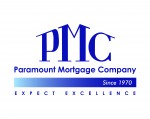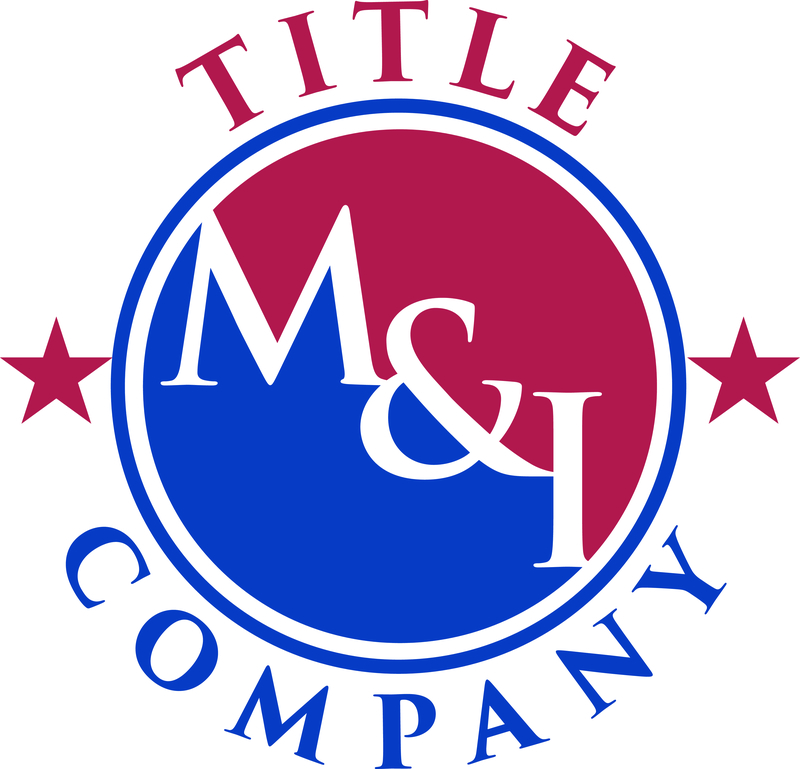By Robert Fishel, on April 7th, 2010 
Interesting results from Fannie Mae National Housing Survey
Fannie Mae released results of the Fannie Mae National Housing Survey, a comprehensive research project that surveyed more than 3,000 consumers to assess their confidence in homeownership as an investment, the current state of their household finances, their views on the U.S. housing finance system, and their overall confidence in the economy.
It appears that Americans continue to value homeownership and think about their homes in ways that go much deeper than the financial investment. The survey also found that the public strongly believes in the importance of upholding the financial commitment involved in buying and owning a home, even during these challenging times when home values have fallen.
Other highlights of the survey:
- 8 in 10 respondents consider homeownership important to the economy
- 31% of the respondents think the economy is on the right track
- 66% of the respondents think it is a good time to buy a house
St. Louis Mortgage Interest Rates – April 6, 2010 *
- 30-year fixed-rate mortgage 5.225% no points
- 15-year fixed-rate mortgage 4.50% no points
- 5/1 adjustable rate mortgage 3.850% no points
- FHA/VA 30-year fixed rate mortgage 5.25%
- Jumbo 5/1 ARM 4.25% no points
- Jumbo 15 year fixed rate mortgage 4.875%
For more information or if you have questions on mortgage rates in St. Louis you may contact me by phone at my direct line, (314) 372-4319, email at rfishel@paramountmortgage.com or you can visit our company website at http://www.paramountmortgage.com.
*Note- The above rates are based upon a typical sale price of $187,500 with a 20% percent down payment leaving a loan amount of $150,000 to a borrower with a 720 credit score for a loan with no discount points charged. Rates and terms will vary depending upon loan amount, home value, credit and income of borrower.
This information is provided by this author and this site for informative purposes only and is not warranted or guarteed in any way.
By Dennis Norman, on March 26th, 2010  Dennis Norman Back in early December I did a post about a new program that was announced in November, the Home Affordable Foreclosures Alternative (HAFA) Program which is scheduled to go into effect April 5, 2010. There was recently supplemental documentation published as well as FAQ’s about the program and I have to admit, it seems to me the government is getting it right with this program.
THE HAFA PROGRAM:
The Home Affordable Foreclosure Alternatives Program provides financial incentives to loan servicers as well as borrowers who do a short-sale or a deed-in-lieu to avoid foreclosure on an eligible loan under HAMP. Both of these foreclosure alternatives help the lender out by avoiding the potentially lengthy and expensive foreclosure proceedings and also by protecting the property by minimizing the time it is vacant and subject to vandalism and deterioration. These options help out the borrower by avoiding the foreclosure process and the uncertainty that comes with it and allows the borrower to negotiate when they will give up possession of their home as well as, under the HAFA program be released from any further liability from the loan including short-fall and deficiencies.
How will the short sale process work under HAFA?
- You will need to enter into a short-sale/deed in lieu agreement iwth your lender.
- Before listing your home for sale your lender will approve a list price on your home or give you the amount of sale proceeds that are acceptable to them under a short sale. The lender will also let you know what costs may be deducted from the sale proceeds, such as commission and closing costs.
- After you list your home and receive an offer from a buyer, you will submit the offer, along with a “Request to Approve a Short Sale form, to your lender. In addition, you will need to submit proof that the buyer has funds to purchase your home, such as a letter that the buyer is approved for a mortgage. After you provide the necessary documentation to your lender, your lender has 10 business days to approve the sale.
- At the closing of the sale the lender is to release you from ALL responsiblities for repaying your mortgage. Plus, you will receive $3,000 from the proceeds to help pay some of your moving expenses.
Your responsibilities under the HAFA short sale.
- Keep your house and your property in good condition and repair and cooperate with your broker to show it to potential buyers.
- You may be required to continue to make full or partial mortgage payments (this will be determined by your lender)
- You must be able to provide the buyer of your home with clear title. To start, determine if you have other loans, judgments or liens secured by your home, such as a home-equity line of credit or a second mortgage. If there are such liens, you will need to either pay these loans off in full or negotiate with the lien holders to release them before the closing date. Under this program, you must make sure other lien holders will agree not to pursue other legal action related to the pay off of their lien, such as a deficiency judgment. You can get help from your broker to negotiate with the other lien holders.
- The program allows up to 6% of the unpaid principal balance of each loan (not to exceed an aggregate of $6,000 for all the loans in total) to be paid from the sale proceeds to help get a lien release.
- At several stages of the short sale process, such as after an offer is received, you will need to complete some paperwork. You are responsible for returning all documents within the time allowed in your short sale agreement with your lender.
Additional Info on Short-Sales.
- You cannot list the property with, or sell it to anyone that you are related to or have a close personal or business relationship with, it must be an “arms length transaction”.
- If you have a real estate license, you cannot earn a commission by listing your owner property. Nor can you have an agreement to receive a portion of the commission.
- The buyer of your home must agree not to sell the home within 90 calendar days of the date it is sold by you.
- You must not have any expectation that you will be able to buy or rent (it’s your lenders discretion on the rent) your house back after closing.
HAFA Short-Sale FAQ’s
- How much real estate commission can be paid out of the sale proceeds? Six Percent is the maximum commission and the seller, nor buyer, can receive any portion of the commission.
- Can a lender that has a second mortgage or other junior lien request additional payments from the seller or real estate agent in addition to what they are allowed to receive from sale proceeds? No.
- What if the property was a principal residence but is vacant at the time the lender evaluates the deal for a Short-Sale or Deed-In-Lieu? The property can be vacant for up to 90 days prior to the date of the Short Sale Agreement and still be eligible but only if the borrower can provide documentation showing that the borrower was required to relocate at least 100 miles from the mortgaged property to accept new employment or was transferred by the current employer, and there is no evidence indicating the purchaser has purchased a new home 90 days prior to the agreement.
Deed in lieu option.
If by the termination date of your short-sale agreement with your lender you have not been able to sell your home, but you have complied with all of your responsibilities under the agreement, then you will be given the opportunity to convey (transfer) ownership of your home to the lender. While this will not allow you to keep your home it will prevent you from going through a foreclosure and will release you from all responsibility to repay the mortgage debt. Additionally, you will still be eligible to receive $3,000 to help with your moving expenses.
Additionally, if you are unable to afford your first mortgage (and therefore not able to do a short sale) you will be considered for the deed-in-lieu option.
By Dennis Norman, on March 18th, 2010  Dennis Norman According to the Economics and Mortgage Market Analysis report just published by Fannie Mae, the weather was the culprit for the slow-down in home sales at the beginning of this year however, we did not get the boost they were anticipating from the extension of the tax credits. “Unfortunately, despite the high hopes associated with the extended and expanded homebuyer tax credit, housing activity appears to have faced a setback that went beyond the impact of adverse weather conditions. ” On a somewhat positive note, the analysts state they view the housing setback “to be a temporary one, and continue to expect activity to rebound later in the year but at a lower trajectory than previously projected.”
The report did not have much in the form of good news concerning new home sales and construction, citing:
- Residential construction spending increased in January, however, “the gain was entirely due to expenditures on home improvement.”
- Spending on new construction fell despite a modest increase in units of housing starts during the month, as the average cost per unit declined sharply.
- Homebuilding activity has improved substantially from its depressed level a year ago, with single-family starts reaching 33 percent above their level in January 2009. A leading indicator of starts pointed to continued increase in the near term, as single-family permits rose for the third consecutive month.
- Both new and existing home sales dropped sharply in January. New home sales fell for the third consecutive month in January to a level that surpassed the previous low recorded a year ago. A string of declines in new home sales caused the months’ supply to increase in each of the past three months, reaching the highest level since May 2009. Existing home sales have fared better. Despite two consecutive sharp drops, January sales remained nearly 12 percent above their record low.
Looking forward, here is what the Fannie Mae analysts are predicting:
- Home sales will likely fall further in February, suggested by a sharp decline in the pending home sales index in January. Furthermore, mortgage applications to purchase homes have remained near their lowest level since 1997, according to the four-week moving average of the Purchase Index in the Mortgage Bankers Association Weekly Applications Survey.
- Weak housing demand bodes poorly for the housing starts outlook. As a result, we revised downward our projected housing starts for the first half of this year.
- We continue to expect home sales to rebound in the second quarter, as homebuyers rush to close sales before the expiration of the second tax credit in June.
- In the third quarter, we expect a payback as the tax credit will likely pull some of the demand forward. By the end of the year, if the labor market improves as expected, sales should start to trend up on a sustainable basis.
- For all of 2010, we project a nine percent increase in total home sales, compared with an increase of 12 percent in the previous forecast. Home price declines moderated in 2009 and we expect the trend to continue this year.
One of the keys to the forecast is “if the labor market improves”……another big variable is going to be interest rates. They still remain at near historic lows, and the fed’s keep telling us that the risk of inflation is low but I’m a little skeptical about rates and are concerned we may be seeing higher mortgage rates by year end. If unemployment improves significantly and if rates hold reasonably steady hopefully we will see the recovery that is being forecasted. Couple of BIG IF’s in my humble opinion though….
By Dennis Norman, on February 25th, 2010  Dennis Norman According to a report issued this morning by the the Federal Housing Finance Agency (FHFA) St. Louis area home prices increased by 1.32 percent in 2009. Granted that’s not much but, hey, after what we’ve seen the last couple of years in the housing market I think this is very good news.
This information comes for the FHFA’s purchase-only price index which is based upon repeat sales of the same single-family properties therefore making it a much more accurate barometer of the market than just looking at median prices of homes sold as many reports do. In addition, since FHFA obtains the sales data from mortgage records of Fannie Mae and Freddie Mac, which form the nation’s largest database of conventional mortgage transactions (more than 5 million repeat transactions) which represents probably the most comprehensive sampling of data available.
One thing to remember though, is Fannie Mae loan limits are $417,000, so the data compiled does not reflect what is happening in the upper end of the market with loans in excess of $417,000 however here in St. Louis that makes up a very small part of the market . In 2009 there were 23,565 homes and condos sold in the St. Louis metro area and only 808 of them (3.4 percent) sold for $500,000 or above.
Other highlights from the report:
- St. Louis ranked 8th of the 25 largest metro areas in terms of price appreciation for 1 year. Washington-Arlington-Alexandria topped the list at 10.55 percent. Miami-Miami Beach-Kendall, FL was at the bottom of the list iwth -12.86 percent
- For the 4th quarter of 2009 St. Louis home prices increased 0.83 percent.
- St. Louis home prices have appreciated 3.91 percent in the past 5 years, coming in 7th of the 25 largest metros. Houston-Sugar Land-Baytown, TX came in 1st at 21.63 percent and Riverside-San Bernardino-Ontario, CA came in last at -37.18 percent.
- Since 1991 St. Louis home prices have increased 99.17 percent, coming in at 14th place of the 25 largest metros. Denver-Aurora-Broomfield, CO had the highest appreciation in that period at 177.80 percent and Warren-Troy-Farmington Hills, MI came in last at 30.99 percent.
So there you go….some good news from me for a change. :)
By Dennis Norman, on February 8th, 2010  Dennis Norman Fannie Mae is offering 3.5 percent in closing cost assistance or an equivalaent amount in appliances for people purchasing a Fannie Mae-owned HomePath® property.
Fannie Mae is trying to entice buyers to buy one of their HomePath® homes by offering to pay up to 3.5 percent in closing cost assistance or an equal amount toward new appliances for owner-occupants who close on the purchase of a property listed on HomePath.com before May 1, 2010. First-time homebuyers, and some long-term homeowners, will also be eligible for the Homebuyer Tax Credit.
Properties eligible for this incentive are listed on HomePath.com and most listings include detailed property descriptions, photographs, community and school information and more. In addition, many Fannie Mae-owned properties are eligible for special HomePath Mortgage and HomePath Renovation Mortgage financing which offers homebuyers an opportunity to purchase with as little as 3 percent down.
“Attracting qualified buyers to the market and reducing the inventory of vacant homes is critical to stabilizing neighborhoods and helping the market recover. Many families are taking advantage of the federal homebuyer tax credit to buy a new home so this is a great time for Fannie Mae to offer some additional help,” said Terry Edwards, Executive Vice President of Credit Portfolio Management. “Homebuyers have the option to choose between financial assistance toward closing costs or new appliances for their home.”
By Dennis Norman, on December 28th, 2009  Dennis Norman
To answer this question I turned to the housing forecast just released by Fannie Mae to see what their economists were predicting. Here are the highlights from the report, showing actual numbers for the 3rd quarter of this year as well as Fannie Mae’s projection for 4th quarter of this year as well as 4th quarter of 2010:
- New Home Starts (seasonally adjusted annual rate)
- 3rd quarter actual- 499,000
- 4th quarter 09 projection – 502,000 (+0.06 % from 3rd quarter)
- 4th quarter 10 projection – 650,000 ( +29.4% from the year before)
- New Home Sales (seasonally adjusted annual rate)
- 3rd quarter actual- 413,000
- 4th quarter 09 projection – 442,000 (+7.02 % from 3rd quarter)
- 4th quarter 10 projection – 510,000 ( +15.38% from the year before)
- Existing Home Sales (seasonally adjusted annual rate)
- 3rd quarter actual- 5,290,000
- 4th quarter 09 projection – 5,623,000 (+6.29 % from 3rd quarter)
- 4th quarter 10 projection – 5,492,000 ( -2.32% from the year before)
- Median Home Prices-New Homes
- 3rd quarter actual- $210,400
- 4th quarter 09 projection – $214,600 (+2.0 % from 3rd quarter)
- 4th quarter 10 projection – $211,400 (-1.5% from the year before)
- Median Home Prices-Existing Homes
- 3rd quarter actual- $178,300
- 4th quarter 09 projection – $175,200 (-1.73 % from 3rd quarter)
- 4th quarter 10 projection – $172,600 (-1.48% from the year before)
- Mortgage Interest Rates (fixed-rate mortgage)
- 3rd quarter actual- 5.16 percent
- 4th quarter 09 projection – 4.88 percent
- 4th quarter 10 projection – 5.32 percent
So there you have it. A somewhat encouraging forecast for the housing industry for next year. A prediction of increased new home sales, a little bump in existing home sales at the end of this year (from the homebuyer tax credit no doubt) and then a slight drop in sales next year from that rate, a slight drop in home prices in the next year and interest rates that are still attractive. If all this pans out 2010 will no doubt end up being a kinder year to the housing industry than 2009 was.
Ah, but wait…I know what you’re thinking…same thing as me. What do these guys know? After all wasn’t it Fannie Mae that had accounting issues, management problems and has been blamed by some to be a contributor to the housing bust? Well, lets take a look at their housing forecast from a year ago and how accurate their projections were then. For the sake of this comparison we will compare their forecast for the 3rd quarter of 2009 with the actual numbers from above:
New Home Starts (seasonally adjusted annual rate)
3rd quarter 2009 actual- 499,000
3rd quarter forecast – 526,000 (over by 5.41%)
New Home Sales (seasonally adjusted annual rate)
3rd quarter2009 actual- 413,000
3rd quarter forecast – 472,000 (over by 14.29%)
Existing Home Sales (seasonally adjusted annual rate)
3rd quarter 2009 actual- 5,290,000
3rd quarter forecast – 5,003,000 (under by 5.42%)
Median Home Prices-New Homes
3rd quarter 2009 actual- $210,400
3rd quarter forecast – $208,600 (under by 0.85%)
Median Home Prices-Existing Homes
3rd quarter 2009 actual- $178,300
3rd quarter forecast – $186,600 (over by 4.66%)
Mortgage Interest Rates (fixed-rate mortgage)
3rd quarter 2009 actual- 5.16 percent
3rd quarter forecast – 5.44 percent (over by 5.42%)
Considering all the factors that affect the housing market I actually think Fannie Mae did pretty good in their forecast last year. They overshot new home sales a fair amount but undershot existing home sales by a much smaller percentage. Overall on combined home sales they got within 4% of predicting the number of sales. I also think they did pretty good on median home prices.
So, since Fannie Mae’s projections last year were fairly accurate lets hope the current projections will prove to be as well. If so, then it will be clear that the worst is behind us.
By Dennis Norman, on December 7th, 2009
 - Dennis Norman
For the first year or so of the real estate slump, it appeared to just be concentrated in the residential market, specifically homes and condos. However, over the past few months the attention has shifted more and more to the commerical and multi-family markets as well as the economy remains weak.
By Dennis Norman, on November 30th, 2009
 - Dennis Norman
Fannie Mae just announced their new “First Look” initiative which is aimed at supporting neighborhood stabilization and promoting home purchases by owner occupants by providing owner occupants an advantage in purchasing Fannie-Mae-owned foreclosed properties.
By Dennis Norman, on November 19th, 2009 New Site Aimed at Helping More Hispanics Buy Homes
 FannieMae announced the company launched a Spanish version of its HomePath.com website designed to help more potential homeowners who speak Spanish purchase Fannie Mae-owned properties. FannieMae announced the company launched a Spanish version of its HomePath.com website designed to help more potential homeowners who speak Spanish purchase Fannie Mae-owned properties.
The new website in Spanish mirrors the English version of HomePath.com featuring an interactive search tool of Fannie Mae-owned properties nationwide, details about HomePath® financing, a mortgage payment calculator, property alerts, as well as information on foreclosure prevention and the Making Home AffordableSM program. Continue reading “Fannie Mae launches new HomePath Site in Spanish“
By Dennis Norman, on November 6th, 2009  Dennis Norman If you are a homeowner facing losing your home in foreclosure but you do not qualify for or have not been able to sustain other loan-workout solutions, such as a modification, you may have another alternative: The Deed for Lease program announced yesterday by Fannie Mae for homeowners with loans insured by Fannie Mae.
“The Deed for Lease Program provides an additional option for qualifying homeowners who are facing foreclosure and are not eligible for modifications,” said Jay Ryan, Vice President of Fannie Mae. “This new program helps eliminate some of the uncertainty of foreclosure, keeps families and tenants in their homes during a transitional period, and helps to stabilize neighborhoods and communities.” Continue reading “New alternative for some homeowners facing foreclosure; Deed for Lease“
By Charles Hugh Smith, on November 4th, 2009 Loose lending standards in government-backed mortgages is setting up the next wave of defaults and sharp declines in housing prices.
 Charles Hugh Smith, Of Two Minds Beneath the hype that housing has bottomed is an ugly little scenario: lending standards are still loose and the low-down payment, high-risk loans being guaranteed by government agencies are setting up the next giant wave of defaults and foreclosures.
You might have thought that the near-demise of risky-mortgage mills Fannie Mae and Freddie Mac would have cooled the supply of highly leveraged government-guaranteed mortgages–but you’d be wrong, for the Feds have compensated for the implosion of the Fannie/Freddie housing-bubble machines by ramping up their other two mortgage mills: FHA and Ginnie Mae. Continue reading “Setting Up the Next Leg Down in Housing“
By Debi Averett, on November 3rd, 2009 I posted yesterday on the Wall Street Journal article Report Sheds Light on Why Homeowners Walk Away. A couple of commenters on the WSJ article said why they were walking away from their mortgage, and I thought their comments were interesting enough to repeat. The first walker says that as a good borrower he is unable to have his loan modified, the second blames bank policies:
The banks (my lender is CITI) are unwilling to modify mortgages for the people able to pay. I suspect if the people underwater, but with money and good credit – you know, responsible people – were able to secure a more reasonable APR that made their monthly payments less painful, they’d more easily tolerate paying on that over-valued house. Continue reading “Why We’re Walking Away“
By Dennis Norman, on October 20th, 2009  Dennis Norman By: Dennis Norman
Yesterday the Federal Housing Finance Agency (FHFA) reported that Fannie Mae and Freddie Mac’s trial mortgage loan modifications under the Obama Administrations Home Affordable Modification Plan (HAMP) were up more than 40 percent in September 2009 from the previous month. According to the report, mortgage loans that are 60-plus-days delinquent increased to 1,401,000 borrowers in July, up a whopping 147 percent from July, 2008 when there were 566,000 borrowers 60 plus days delinquent.
Here are highlights from the report (all the data, unless noted otherwise is from July 31, 2009): Continue reading “HAMP loan modifications up 40 percent in September; Serious mortgage delinquencies up 147 percent in past year“
By Dennis Norman, on October 14th, 2009  Dennis Norman By: Dennis Norman
In the past I have been doing weekly posts with updated current mortgage rates based upon national data from either Freddie Mac, Fannie Mae or the Mortgage Bankers Association. However, just like real estate, mortgage rates are “local” to some extent and do vary in different markets.
In an effort to help people in the St. Louis metro area get a more accurate picture of what mortgage interest rates are doing here, not to mention data that is accurate up to the minute I publish rather than delayed several days or a week as the national data is, I wanted to find a local source for timely, accurate rate information and have done just that. Continue reading “New! Local St. Louis Mortgage Rates“
By Dennis Norman, on October 9th, 2009
By Dennis Norman, on October 7th, 2009 To alleviate some suffering by homeowners, the Obama Administration introduced the “Making Homes Affordable” plan last March. Unfortunately, the plan has not yet had the intended effect.
Article by the Grand Law Firm
Economists debate whether or not the country is actually currently in a recession. Some say that there are positive signs that we have reached the bottom and the economy is turning around. Others, however, suggest that the country still has a long way to go and it may be years yet before we truly reach financial recovery. Regardless of who is right though, one thing is clear: many people are facing significant financial hardships and need help now. Continue reading “Mortgage Programs Fall Short in Keeping Homeowners out of Foreclosure“
By Dennis Norman, on August 28th, 2009
 Charles Hugh Smith, Of Two Minds By: Charles Hugh Smith:
In February 2007 I suggested a 4% mortgage delinquency rate could trigger a decline in the entire housing market. Since that proved prescient, we should revisit the analytic tool behind that call: the Pareto Principle.
There is a whiff of euphoria in the housing market, a heavily touted confidence that “the bottom is in.” It’s all roaring back–rising sales, multiple bids by anxious buyers, 3.5% down payments, low mortgage rates and the bonus of an $8,000 first-time home buyer credit (a gift from U.S. taxpayers). Housing Lifts Recovery Hopes (Wall Street Journal) Continue reading “Beware The False Bottom In Housing“
By Dennis Norman, on July 30th, 2009  Dennis Norman By: Dennis Norman
Today we pick up where we left off yesterday with my E-View TM with respected mortgage banker, H. John Frank, President of Paramount Mortgage Co. here in St. Louis.
If you missed part one or two, there are links to both at the end of this post. And now, part three of the E-View TM:
Q-I have seen a lot of reports about “jumbo” loans and rates being artificially high on those loans. What is a “jumbo” loan and have the rates been affected in a negative way as a result of the mortgage mess?
 H. John Frank, Jr., President, Paramount Mortgage Co. A- Jumbo loans are ones that exceed the FNMA (Fannie Mae) loan limit. In most states, this limit is $417,000. There are fewer and fewer investors who make these loans because they are not as marketable (investors can always sell their ‘conforming’ loans to Fannie Mae or Freddie Mac if they need to raise funds). Without this constant outlet, the liquidity of these loans is diminished, thus demanding a higher yield for the product.
Continue reading “Mortgage information and advice from a St. Louis Mortgage Banker – Part 3 of a series“
|
Recent Articles
|





 Third Quarter 2009 Commercial and Multifamily Mortgage Delinquency Report
Third Quarter 2009 Commercial and Multifamily Mortgage Delinquency Report 



